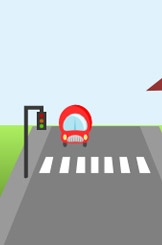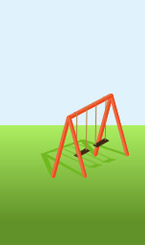Pedestrian Safety
Pedestrian Safety
Walking is an important part of children’s lives. It is important for their health and fitness, and their ability to get around their neighbourhood and community independently.
Being a pedestrian can be a risky business, especially for children in busy cities. Roads are designed with adults in mind, but children are not ‘little adults’. They are less well developed physically, cognitively and in terms of their traffic experience.
Here are some guidelines to help keep children safe as pedestrians at different ages:
Up to 5 years old
- Separate play areas from cars. If possible, fence your child’s play area off from driveways and the street. If this is not possible, help children choose safe places to play away from cars and driveways, and supervise them closely
- Always walk right around your car before backing out. Have everyone else using your drive do the same.
In traffic situations
- Always be with your child. They are too young to cope alone.
- Hold your child’s hand when you are near traffic
- Set a good example for them to copy. Explain what you are doing when you cross the road together. Begin teaching them to “STOP, LOOK, LISTEN and THINK” (see From 5-9 years).
- Make sure they get in and out of cars on the kerb side.
- Ask your preschool if they teach road safety and what safety measures are in place.
From 5 to 9 years
- Supervise your child at all times near traffic, particularly when crossing roads.
- Teach your child how to cross roads safely. Children must first stop at the kerb. Then they need to look and listen for traffic, and then decide whether it is safe to cross. (“STOP, LOOK, LISTEN and THINK”)
- Make the trip to school together along the safest footpaths and use safe crossing places as an example for your child to follow.
- If you are unable to be there, arrange for your child to be supervised on the way to and from school and during after school activities. Ask if your school has a walking school bus program.
- Explain words like “fast”, “slow”, “near” and “far”. Talk about signs and traffic lights and the safe places to cross. Point out dangerous places and where not to cross – near curves and where things might hide children from view.
- If you are picking children up from school, have a safe meeting place, then cross the street with them. Never call them over from the opposite side of the street.
- Continue to make sure children get in and out of cars on the kerb side.
- Ask at your child’s school what traffic safety programmes are taught.







